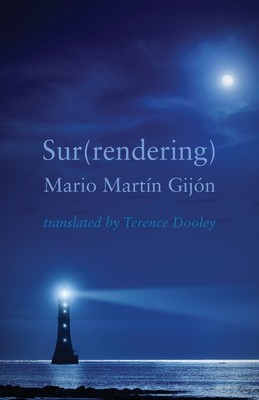
- We will send in 10–14 business days.
- Author: Mario MartÃn Gijón
- Publisher: Shearsman Books
- ISBN-10: 1848617046
- ISBN-13: 9781848617049
- Format: 14 x 21.6 x 0.7 cm, minkšti viršeliai
- Language: English
- SAVE -10% with code: EXTRA
Reviews
Description
Mario MartÃn Gijón's (Sur)rendering is a sequence of short pas-sionate lyrics describing a love lost and found. This might sound like nothing new in the history of poetry, but the poet immerses us in his story by a complex process of linguistic recreation: recreation in the sense of re-invention and recreation also as play, or playfulness.
Eduardo Moga explains his method: 'The poetry of Mario MartÃn Gijón is characterised by a morphological promiscuity which springs from an intense awareness of the susceptibility of language to experiment. Words become lexical clay in the hands of the poet, or articulated entities into which other words may be telescoped. Words break, unscrew, crumble onto the page like sand. They are like scattered pieces of a mosaic reassembled to form a new puzzle. This is done by the insertion of brackets around letters, slashes allowing a choice between letters, dashes severing or connecting syllables, suffixes or prefixes belonging equally to the words surrounding them. It multiplies the ways in which a phrase can be read, multiplies its potential simultaneous meanings." So the poet is able to juggle the memory of pleasure with present suffering, joy and pain in a single verse: (pre/es/ab)sence. Ambiguity striving for synchronicity, the language of love becoming as fraught with contradiction as love itself.
EXTRA 10 % discount with code: EXTRA
The promotion ends in 21d.22:40:40
The discount code is valid when purchasing from 10 €. Discounts do not stack.
- Author: Mario MartÃn Gijón
- Publisher: Shearsman Books
- ISBN-10: 1848617046
- ISBN-13: 9781848617049
- Format: 14 x 21.6 x 0.7 cm, minkšti viršeliai
- Language: English English
Mario MartÃn Gijón's (Sur)rendering is a sequence of short pas-sionate lyrics describing a love lost and found. This might sound like nothing new in the history of poetry, but the poet immerses us in his story by a complex process of linguistic recreation: recreation in the sense of re-invention and recreation also as play, or playfulness.
Eduardo Moga explains his method: 'The poetry of Mario MartÃn Gijón is characterised by a morphological promiscuity which springs from an intense awareness of the susceptibility of language to experiment. Words become lexical clay in the hands of the poet, or articulated entities into which other words may be telescoped. Words break, unscrew, crumble onto the page like sand. They are like scattered pieces of a mosaic reassembled to form a new puzzle. This is done by the insertion of brackets around letters, slashes allowing a choice between letters, dashes severing or connecting syllables, suffixes or prefixes belonging equally to the words surrounding them. It multiplies the ways in which a phrase can be read, multiplies its potential simultaneous meanings." So the poet is able to juggle the memory of pleasure with present suffering, joy and pain in a single verse: (pre/es/ab)sence. Ambiguity striving for synchronicity, the language of love becoming as fraught with contradiction as love itself.


Reviews